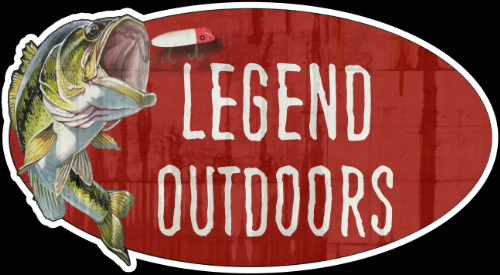Everyone has that one bait that they have strict confidence in and it is hard to cut the line and tie on something new. For everyone it is different and during the ice season there is no exception to that rule.
Your “Go To” jig is always tied onto at least one of your short rods that is sitting in the sled, bucket, or in the back of the shanty. It is that one jig that never fails you and it comes out on top when the fishing is tough.
Some days not even that one jig is enough to break through the tough bite that may be happening on the body of water you are sitting on top of. It doesn’t seem to matter whether you tip it with wax worms, mousies, or even spikes, you just can’t seem to entice those bigger fish to take your tempting offering.
It is days like these that it is time to switch things up a little and pull out the plastic. No, not your credit card, although if you do get carried away, like I do with baits, you may need your credit card. The plastic I am referring to would be in the way of the small triangle profiled or round, long and slender style tails that when added to your jig can dance even the pickiest of fish into biting.
Plastics for the winter are just like those used by bass fisherman all around the globe as they come in multiple shapes, colors, sizes, and even flavors. However, it seems best when out on the ice to keep it simple and work with a few shapes and colors. You don’t want to be overburdened with so much gear you just can’t seem to pull your sled.
Pick a few colors that cover the spectrum of forage, and light conditions that you may face. Red is always a great color as it can simulate a blood worm that is often found in most lakes. White is a good choice as well and to round things off grab a black and a chartreuse. The black will give you a nice profile in the low light conditions and in the brighter sunlight the chartreuse can call in fish from long distances.
The key to a good plastic is that it is soft and supple even in the cold temperatures. You want something that is going to give you the most action under the frozen surface. It also doesn’t hurt to have something with a little flavor like Anise or garlic. These tend to keep the fish holding onto the bait longer and offering you a better chance and a good hookset.
There are all types of manufactures out there like Wedgies, or Stankx , but they all have one thing in common and that is they catch fish. These plastics are triangular in profile and they slim down to a long whippy end. This end produces an action that you just don’t get out of live bait. However, tipping your plastics with a little live meat can always add a bit of an added bonus to entice the fish to hold onto the bait longer.
Most of the time I find that the use of a horizontal style jig offers the best platform to utilize plastics on. This style of jig allows the plastic to move freely and offers the best action to the plastic. You can use an entire piece or if you need to downsize just snip a small section off of the fat end and you won’t sacrifice the action on the plastic.
A quick little tip to think about when using horizontal jigs is to think a bit outside the box. Most people will preach to you that your knot should always be perfectly on the top of the eye so the jig is sitting fully horizontal. This is a great method and it does allow the jig to swim in circles as you jig it slowly.
What I like to recommend is that you move the knot to allow the jig to sit more at a 45deg angle. What this will do is it will make the jig go up and down while staying in one position. This up and down movement allows the tail to offer up the most amount of action and enticement to drive those fish mad.
The fish see the tail and the erratic movement and to them it is a struggling larvae or blood worm. The key is to watch your flasher and when you have a fish come into the screen, stop jigging and let the jig sit still for a moment. Most prey will often freeze when a threat approaches and by stopping the jig you are simulating this response. The fish will often attack on the pause.
There really is not right or wrong way to rig or even work your plastics. It is really all up to the mood of the fish and the body of water that you are fishing on. Take into account the water clarity, sunlight penetration, and amount of action you want and you can find the right plastic to meet your needs.
Plastics should be in every ice fisherman’s box as they are often times a better substitute for live bait. They tend to bring in the larger fish and often will entice a bite out of the finickiest of fish. They also last much longer than live bait and are easier to use on those bitter cold days.
The next time you are out on the ice and the bite turns tough or you just can’t seem to get those bigger fish to go, switch up to some plastics and give them a go. The long whippy tail will put more and bigger fish on the ice for you in no time.

